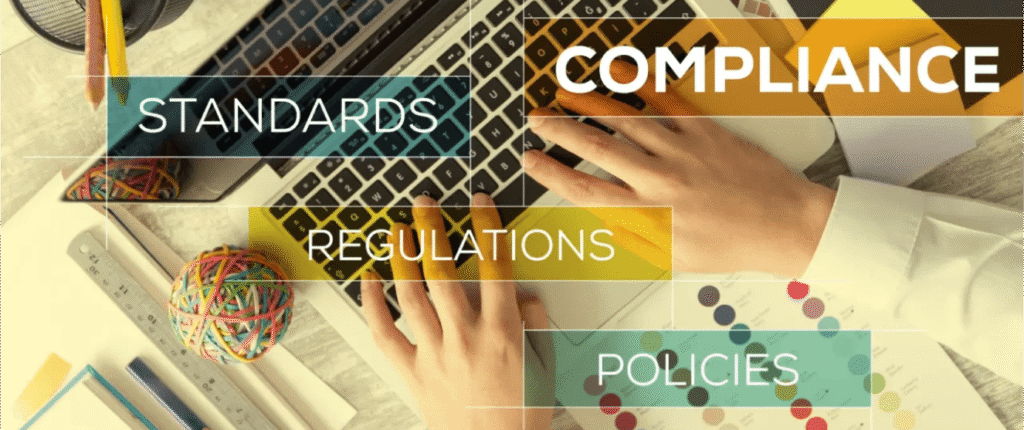Is Growing a Business Is Like Raising a Child?

People often say, “Your business is your baby.” And while it’s usually delivered with a smile, the truth behind the phrase is deeper than most business owners realise. Running a business requires the same emotional investment, patience, guidance, and consistent involvement as raising a child. Both demand structure, early support, and the willingness to confront problems before they grow into something unmanageable. When a child shows signs of discomfort—a recurring cough, difficulty learning, a sudden shift in behaviour—delaying intervention only compounds the issue. Businesses behave the same way. When owners push difficult areas of the business into “next week, next month, next year,” they unknowingly allow small cracks to widen. But the comparison isn’t meant to sound dramatic. It’s meant to show just how natural and predictable these challenges can be—and how manageable they are when addressed at the right time. 1. The Parallels Between Raising a Child and Growing a Business A child doesn’t grow overnight. They move through stages; infancy, early development, school-age years, adolescence—each requiring a different kind of attention. A newborn needs round-the-clock care, structure, and gentle nurturing. A toddler needs boundaries and consistent routines. A teenager needs emotional support and guidance around identity, decision-making, and independence. Businesses pass through growth stages just as predictably. In the early days, owners are hands-on with everything. The business needs constant feeding; sales, marketing, operations, compliance, to survive. As it grows, the needs shift. Processes become more important. Roles start to formalise. Teams require clarity. Decisions become less about survival and more about direction. Yet many owners keep treating a five-year-old business like a newborn: hovering, firefighting, improvising, and neglecting the structural maturity the organisation actually needs. Others do the opposite: they expect start-ups to function with the discipline and stability of a seasoned organisation. And just like children, businesses don’t grow evenly. They have growth spurts, emotional phases, resistance, regressions, breakthroughs. Silence is not always a good sign. A quiet business is often one where problems are brewing just beneath the surface. Understanding these parallels helps leaders recognise that growth is not only about ambition—it is about stewardship. 2. The Danger of “We’ll Handle It Later” Thinking One of the most common patterns we see at Infinikey Solutions is business owners pushing necessary tasks into the future; not because they don’t care, but because they’re drowning in daily demands. Admin takes over. Client work never stops. Team issues need attention. The to-do list grows. There is always something more urgent than reviewing a process or tightening HR documentation. But, much like ignoring a child’s persistent cough, delaying fundamental needs comes with consequences. When owners postpone operational fixes, whether it’s restructuring a workflow or having an uncomfortable HR conversation, the issue rarely stays contained. It grows quietly in the background, influencing team morale, financials, customer experience, and overall stability. Delays around process improvements, for example, rarely seem disastrous in the moment. One extra step here, a manual workaround there…it feels harmless. Yet these tiny inefficiencies accumulate, becoming part of the company’s culture and daily rhythm. Soon, staff are spending hours each week compensating for a process that should have been improved months ago. The same is true for HR issues. A performance concern or interpersonal conflict doesn’t resolve itself with time—it simply becomes less visible until it eventually erupts in the form of disengagement, turnover, or formal complaints. Financial delays, especially around cash flow monitoring, tax obligations, and reconciliation, are perhaps the most dangerous. What begins as a missed check-in transforms into a cascade of surprises, strained supplier relationships, and sometimes even legal consequences. Technology, too, suffers when postponed. A system that “mostly works” today becomes the reason for customer frustration tomorrow. Every delay is a seed. Whether that seed grows into a weed or a forest fire depends entirely on how long it’s left unattended. 3. The Compounding Effect: How Small Issues Become Big Problems Small problems are deceptively easy to ignore. They whisper instead of shout. But over time, they compound—much like a child who keeps struggling with reading because no one noticed the early signs. Culture Erodes Quietly When issues aren’t addressed; late communication, unclear expectations, inconsistent leadership, teams begin to accept them as normal. You suddenly have employees who hesitate to speak up, who feel undervalued, or who quietly disengage. By the time leadership becomes aware of the tension, the damage has already embedded itself into everyday behaviours. Processes Become Harder to Fix the Longer They’re Neglected A small inefficiency will rarely stay small. If a process involves double entry, unclear handoffs, or redundant approvals, people eventually create their own shortcuts to cope. These shortcuts aren’t documented or consistent; they vary by person, shift, and department. What began as a simple fix becomes a full-blown operational maze requiring time, training, and sometimes a complete rebuild. Financial Blind Spots Expand Faster Than Expected Cash flow doesn’t deteriorate suddenly. It deteriorates silently. A delayed invoice here, an unrecorded expense there, a tax deadline pushed a few weeks; all of it creates a financial picture that becomes increasingly blurry. Without accurate data, leaders end up making decisions based on assumption rather than evidence. HR Problems Escalate Into Legal or Cultural Problems A performance discussion avoided today becomes a team grievance tomorrow. Poor behaviour tolerated once becomes an unofficial standard. When boundaries aren’t set, the team begins to assume there are none. And once fairness or equity comes into question, rebuilding trust becomes extremely difficult. Strategy Becomes Obsolete Without Anyone Realising It Markets shift. Technology evolves. Competitors adapt. A business that only reviews its strategy “when things slow down” risks operating on outdated assumptions. The organisation grows, but the direction becomes foggy. Resources get scattered. Teams lose alignment. These aren’t sudden failures. They’re the predictable outcome of delayed care. 4. The Power of Timely Intervention Addressing problems early doesn’t just prevent disaster; it strengthens the business in ways that compound positively over time. When issues are caught early, solutions are quicker, cheaper, and far less disruptive. A simple
Why Every Sydney SME Needs Process Automation for Business Growth

Introduction: The Growth Bottleneck for Sydney SMEs Running a small or medium-sized enterprise (SME) in Sydney is no small feat. Rising costs, competitive markets, and the constant push to do more with less create daily pressure on business leaders. The irony is that while many SMEs know they need to innovate, they often get caught in the same manual, repetitive processes that hold them back from scaling effectively. Process automation in Sydney SMEs is no longer a luxury or “big business” concept — it is a critical growth enabler. As management consultants, we have seen firsthand how process automation transforms small businesses. The key is not just about saving time — it’s about freeing up resources so leaders can focus on strategy, customers, and long-term SME growth strategies. What Is Process Automation in Practical Terms? Process automation means using technology to handle recurring, rule-based tasks that previously consumed human effort. Think of it as building invisible systems that “run in the background” while your team focuses on high-value work. For example, instead of manually sending follow-up emails to leads, your system can trigger personalized responses the moment an enquiry comes in. Instead of updating spreadsheets for payroll or inventory, data can automatically sync between platforms. These aren’t futuristic concepts — they’re simple, cost-effective Sydney business automation solutions SMEs can implement today. Scenario 1: The Cost of Manual Processes Suppose your retail SME relies on manual invoicing and stock checks. Every week, staff spend hours reconciling figures, leading to delayed reporting and occasional errors. The impact? Decisions are based on outdated or incorrect data, and opportunities slip away. Now imagine the same process automated: stock levels update in real time, invoices are generated instantly, and your dashboard provides a live view of sales and margins. Not only does this reduce the risk of error, but it also allows leadership to act swiftly and confidently. The outcome is faster decisions, better cash flow, and reduced overheads. Why Sydney SMEs Cannot Afford to Wait Sydney’s business environment is competitive and fast-moving. Larger enterprises are already leveraging automation, which widens the efficiency gap between them and smaller firms. If SMEs delay, they risk being permanently outpaced. Automation levels the playing field. It allows a five-person operation in Parramatta to deliver the same speed and accuracy as a hundred-person competitor in the CBD. For many SMEs, adopting process automation is not about staying ahead — it is about staying relevant. Scenario 2: Customer Experience as a Growth Lever Consider a service-based SME that manages client appointments manually. Missed reminders, double bookings, and slow follow-up create frustration for customers. Over time, this damages reputation and reduces referrals, two lifelines for growth. With process automation, clients receive automatic reminders, confirmations, and follow-ups. A central system tracks interactions and preferences. This streamlined customer journey not only boosts satisfaction but also turns customers into advocates. The impact? More repeat business, higher retention, and organic growth. The Misconception: “Automation Will Replace People” One of the most common concerns SMEs raise is the fear that automation will replace jobs. The truth is the opposite, for automation replaces tasks, not people. It reduces the administrative burden, enabling employees to shift their energy to strategy, sales, and customer relationships. For Sydney SMEs, this means your best people spend less time buried in paperwork and more time driving growth. Automation does not take away the human element; it amplifies it. Tangible Business Benefits of Process Automation Efficiency Gains: Routine processes are completed faster, with fewer errors. Cost Savings: Reduced overheads and better resource utilization. Scalability: Easier to expand without proportional increases in staff or costs. Data Visibility: Real-time insights into KPIs, enabling informed decision-making. Resilience: Less dependency on individual employees for routine tasks. Scenario 3: Scaling Without Growing Costs Let’s suppose an SME in logistics wants to expand services but fears the cost of hiring more staff. With process automation, order management, dispatch scheduling, and reporting can run seamlessly in the background. Instead of doubling headcount, the business scales revenue with existing resources. This is how automation directly impacts growth. It allows businesses to scale smarter, not harder. The Sydney SME Advantage Local SMEs often assume automation is too complex or expensive. But the opposite is true. Many tools are designed specifically for small business affordability and ease of use. Sydney’s strong digital infrastructure also means SMEs can adopt business process improvement solutions quickly, without heavy upfront costs. The real advantage lies in agility. Unlike larger enterprises, SMEs can implement change faster. A Sydney SME that embraces automation today can leapfrog competitors still clinging to manual systems. Overcoming Barriers to Adoption The main barriers are usually mindset and knowledge, not cost. Leaders often hesitate because they don’t know where to start. The answer is simple: begin small. Audit your processes, identify one repetitive task, and automate it. Measure the impact, then expand gradually. This incremental approach minimizes risk and demonstrates quick wins. For SMEs, even a 10–20% efficiency gain can free up significant time and cash flow. Scenario 4: Leadership Impact Picture a business owner spending 20 hours a week on reporting. With process automation, that time is cut to 2 hours. The additional 18 hours can be reinvested in strategy, networking, or customer engagement. This shift changes not just operations, but leadership focus. When leaders operate at a strategic level rather than being buried in tasks, businesses grow. Automation enables leaders to lead. Conclusion: Growth Through Smart Systems For any SME, process automation is not a “nice to have”, it is an essential strategy for growth. It cuts waste, boosts efficiency, and empowers teams to focus on what truly matters. The SMEs that thrive in Sydney’s competitive landscape will be those that embrace automation early, building smarter systems that grow with them. The question is not whether you can afford to automate, it’s whether you can afford not to.
Can We Really Trust AI In Business?

In boardrooms and brainstorming sessions across the globe, artificial intelligence is no longer a distant prospect—it’s a daily presence. From automated hiring systems to predictive analytics in marketing, AI has become a cornerstone of modern business operations. But as its influence deepens, so do the questions around its fairness, transparency, and ethical implications. Can we really trust algorithms to make decisions that are fair and just? Or are we offloading moral responsibility to systems that were never designed to carry it? The Illusion of Objectivity At first glance, AI seems like the ideal problem-solver: impartial, efficient, and infinitely scalable. Unlike humans, algorithms don’t get tired, hold grudges, or fall prey to emotional bias. But the belief that AI is inherently objective is, at best, wishful thinking and, at worst, dangerously misleading. AI systems are trained on data—data that reflects human behaviour, historical trends, and real-world outcomes. If that data is biased (and it often is), the AI will inherit and amplify those biases. A recruitment algorithm trained on a company’s past hiring patterns might systematically favour one gender or background over another, simply because that’s what the historical data shows. The system isn’t malicious; it’s doing exactly what it was designed to do—just not what we want it to do. This phenomenon isn’t hypothetical. Real-world examples abound. Amazon once had to scrap an AI hiring tool that consistently downgraded resumes containing the word “women’s,” as it had learned to favour male candidates based on historical hiring data. Facial recognition software has been found to misidentify people of colour at significantly higher rates than white individuals. When AI gets it wrong, it can get it dangerously wrong. Accountability in the Age of Automation When an algorithm makes a bad decision, who’s responsible? This is perhaps the thorniest question in the AI ethics debate. Traditional corporate accountability frameworks rely on human actors—people who can be held liable for negligence, misconduct, or harm. But as AI systems grow more autonomous, the chain of responsibility becomes blurred. If an AI tool denies a loan based on flawed data, is the bank liable? Is the software vendor? The data scientist who trained the model? Or is the blame diffused so widely that no one is truly accountable? This lack of clear responsibility creates what scholars call the “accountability gap,” and it’s deeply problematic—not just for legal systems, but for trust. Businesses that rely on AI without mechanisms for oversight risk eroding customer confidence. Transparency isn’t a luxury here; it’s a necessity. Why The Human Element Is Necessary One of the most seductive promises of AI is its ability to eliminate human error. But in many cases, removing humans from the loop is exactly what makes systems risky. AI systems are excellent at pattern recognition but terrible at moral reasoning. They don’t understand fairness, empathy, or justice—concepts that are essential in business decisions affecting real lives. That’s why human oversight isn’t just recommended—it’s non-negotiable. Systems where AI supports but does not replace human decision-making, offer a more ethically responsible model. In areas that require critical decision making that can carry life-altering consequences—keeping humans in charge ensures that nuance, compassion, and context are not stripped away in favour of statistical efficiency. It’s also important to note that human oversight must be more than symbolic. Slapping a “review” step at the end of an automated process won’t cut it. Oversight needs to be meaningful, empowered, and, crucially, informed. That means training business leaders not just in how AI works, but in how it fails. Can We Build Ethical AI? The field of “ethical AI” is growing, with researchers, developers, and policymakers working to create frameworks that promote fairness, accountability, and transparency. But until we get there There are concrete steps businesses can take today. Conducting bias audits, diversifying training data, establishing algorithmic accountability policies, and building interdisciplinary teams that include ethicists and domain experts—not just engineers—are all critical. Still, we must be clear-eyed. Ethical AI is not a destination; it’s an ongoing process. As technologies evolve, so too must our standards, our questions, and our vigilance. Conclusion So, can we trust algorithms? The honest answer is: not completely—and certainly not blindly. Algorithms are tools, not oracles. They can inform decisions, but they should not replace human judgment, especially when those decisions carry ethical weight. Trust in AI must be earned, not assumed. It requires transparency, accountability, and above all, a commitment to placing human values at the heart of technological advancement. As businesses continue to embrace AI, they must resist the temptation to offload moral responsibility onto machines. Because in the end, it’s not the algorithm that’s accountable—it’s us.
Why AI Can’t Do Everything for Your Business

Artificial Intelligence (AI) has rapidly become a game-changer in the business world, driving automation, streamlining processes, and offering unprecedented insights. From predictive analytics to customer service chatbots, AI is reshaping industries everywhere. But here’s the reality check: AI, for all its strengths, cannot do everything. When it comes to highly specific business requirements, niche expertise, and strategic decision-making, AI still falls short. Human intelligence, experience, and adaptability remain irreplaceable. In this blog, we’ll explore the areas where AI shines, where it struggles, and why businesses still need human expertise to navigate complex challenges. What AI Does Well Before diving into AI’s limitations, let’s acknowledge its strengths. AI excels at: 1. Data Processing & Analysis AI can process vast amounts of data at lightning speed, identifying patterns and making predictions that would take humans significantly longer to uncover. This is particularly useful in industries like finance, healthcare, and marketing. 2. Automation of Repetitive Tasks From scheduling emails to processing invoices, AI reduces the time spent on mundane, repetitive tasks. This allows businesses to reallocate human resources to more strategic activities. 3. Customer Support & Engagement Chatbots and virtual assistants handle customer inquiries, process transactions, and even provide product recommendations, significantly improving customer experience. 4. Predictive Analytics & Decision Support AI models help businesses make data-driven decisions by predicting market trends, customer behavior, and potential risks. While these capabilities are impressive, they don’t make AI an all-encompassing business solution. Let’s look at where AI falls short. Where AI Struggles 1. Highly Specific Business Needs AI works best when handling well-defined problems with structured data. However, when businesses require tailored solutions that account for nuanced industry challenges, AI often lacks the context and adaptability to deliver. Example: A manufacturing company looking to optimize its supply chain may need a strategy that considers unique supplier relationships, local regulations, and unforeseen geopolitical risks—factors that AI alone cannot fully address. 2. Strategic & Creative Thinking AI is excellent at identifying trends, but it lacks the creative and strategic thinking necessary to innovate. Businesses rely on human expertise for product development, brand positioning, and long-term vision. Example: AI can generate marketing content, but crafting a compelling brand story that resonates with customers requires human intuition and creativity. 3. Complex Human Interactions Customer service chatbots are helpful, but they struggle with handling emotionally charged situations or complex customer concerns that require empathy and critical thinking. Example: A chatbot can provide answers about refund policies, but a frustrated customer who has received a damaged product might require human intervention to retain their loyalty. 4. Ethical & Legal Decision-Making AI operates based on data and algorithms, but ethical considerations and legal complexities often require human judgment. Example: AI-driven hiring tools have been found to reflect biases present in their training data, making human oversight crucial to ensure fair and ethical recruitment practices. 5. Adaptability to Unstructured Environments AI struggles in environments where rules and conditions are constantly changing. Businesses operating in dynamic industries require agility, which is best achieved through human intuition and experience. Example: AI can analyze past financial trends, but in an economic crisis, businesses need human experts to interpret new market conditions and pivot strategies accordingly. The Human-AI Partnership: Striking the Right Balance AI should be seen as a powerful tool, not a replacement for human intelligence. The most successful businesses strike a balance between AI and human expertise by: 1. Leveraging AI for Efficiency – Use AI to automate repetitive tasks, analyze data, and improve operational efficiency. 2. Integrating Human Oversight – Ensure AI-driven decisions are reviewed by human experts to avoid ethical and strategic pitfalls. 3. Focusing on Customer Experience – Use AI for basic interactions but rely on humans for relationship-building and problem resolution. 4. Encouraging Innovation & Creativity – Let AI handle data-driven insights while humans focus on innovation, storytelling, and strategic growth. Conclusion AI is a transformative force in business, but it’s not a one-size-fits-all solution. While it enhances efficiency and data-driven decision-making, it lacks the creativity, emotional intelligence, and adaptability that businesses need to thrive. The future isn’t about AI replacing humans—it’s about AI empowering businesses alongside human expertise. Companies that recognize this balance will be the ones that stay ahead in an increasingly AI-driven world. So, if you’re considering AI for your business, remember: it’s a tool, not a strategy. The best results come from blending AI’s capabilities with human intelligence, ensuring that technology works for you, not instead of you.
Of Tangled Threads and Orderly Webs

The other day while browsing on LinkedIn, I came upon a post, the gist of which was that predetermined SOPs are not really necessary to an organisation; good and smart people will find ways to fulfil their responsibilities efficiently and well, while people who are bad at their jobs will continue to be bad, no matter what the circumstances are. What followed in the comments section was a long, but productive discussion on whether SOPs are actually beneficial to the operations of an organisation, or if it’s a gimmick that companies can prosper even without. But hear me out on this, and this little detail is crucial: SOPs are not just about the individuals, but about the collective, the success of an organisation as a whole. Consider this, a chef may rely occasionally on strokes of inspiration and ingenuity to come up with a recipe or to create a successful dish, but in the long run, they will need to follow a recipe to replicate the same dish, and more so to do it consistently. SOPs operate in the same manner, ensuring that a structure or framework exists within an organisation that provides consistency, efficiency and accountability. One important point that a contributor raised to the discussion was the fact that while ‘good’ and ‘bad’ people may perform a certain task in their own respective method, it isn’t necessary that either of them could be performing a task in its correct prescribed manner. The easiest, most obvious tasks are the ones most prone to being messed up, and in an organisation, there is a plethora of things that can go wrong, and more often than not, they do. Standard operating procedures can dramatically reduce the probability of such events happening, if not completely eliminate such instances. As far as the argument for ‘good’ people being good at their job goes, if a better way to perform a task is somehow arrived at, it can always be tried and tested to see that it doesn’t cause problems elsewhere. Once it has been proven to be a superior method, the standard can be changed and taught to others as well. SOPs are indispensable tools for promoting consistency, efficiency, and accountability within organizations. Rather than stifling innovation, well-designed SOPs empower individuals to perform their roles effectively while maintaining operational integrity. So, the next time you question the importance of SOPs, remember: they’re not just rules; they’re the formula for organizational achievement. Subscribe to our newsletter Subscribe to receive the latest posts to your inbox every week.
The Roadmap to Success: Aligning Policies and Strategies for Your Business

In the fast-paced world of business, success is often seen as a result of not just hard work, but also smart work. One crucial aspect of smart work is aligning your policies and strategies with your long-term goals and vision. Let’s dive into how this approach can make all the difference, using relatable examples from everyday businesses like hair salons and restaurants. 1. Clear Direction: Imagine you’re starting a new hair salon. Without a well-thought-out strategy, you might offer various services without a clear focus. However, by aligning your policies and strategies with your long-term vision of becoming the go-to salon for trendy hairstyles, you can concentrate on specific services and training, thus attracting the right clientele. 2. Consistency Matters: Think about your favourite restaurant. When it consistently delivers the same great experience, you keep coming back. In contrast, a restaurant that frequently changes its menu, theme, or service quality may struggle to build a loyal customer base. Aligning policies and strategies ensures consistency in delivering your business’s promise, just like that beloved restaurant. 3. Adaptability: Business landscapes change, and adapatation is key. Suppose your restaurant embraces new trends or dietary preferences by adjusting its menu over time. In this case, your strategy aligns with long-term success by staying relevant and meeting customer demands. Failing to do so might lead to stagnation or even closure. 4. Efficient Resource Allocation: Consider a hair salon that doesn’t plan its staffing adequately. This can result in overworked employees or idle hours when customers are scarce. Aligning your policies with a staffing strategy based on long-term demand forecasts can optimise your resources, ensuring you have the right number of staff during peak times. 5. Customer Satisfaction: A successful hair salon and restaurant both prioritise customer satisfaction. Aligning policies and strategies with this goal can lead to positive experiences, repeat business, and referrals. Ignoring customer needs may result in poor reviews and reputational damage. 6. Measure and Adjust: Finally, constant assessment and adjustment are vital. Both hair salons and restaurants can benefit from feedback mechanisms. By aligning your policies to include regular customer feedback and using this data to tweak your strategies, you can improve and grow over time. Conclusion: In conclusion, aligning your policies and strategies with long-term goals and vision is like having a roadmap to success. It ensures you have a clear direction, maintain consistency, adapt to changes, allocate resources efficiently, prioritise customer satisfaction, and continually improve. Businesses that shoot in the dark without a well-thought-out strategy risk inconsistency, inefficiency, and falling out of touch with their customers. So, whether you’re running a hair salon, a restaurant, or any other business, remember: that a strategic approach can make all the difference in your journey to success.
Delaying Adequate Policies and Procedures When Upscaling

Keywords: Policies and procedures, Upscaling, Business growth, Contingency plan, Business continuity plan, Process optimisation, Productivity, Automation and AI As a business owner, you’re probably all too familiar with the rush of excitement that comes with planning to upscale. It’s a thrilling time, filled with thoughts of increased sales, more customers, and a bigger market share. But here’s the thing—too often, in the flurry of planning, one crucial aspect is overlooked: the need for well-defined policies and procedures. Without them, the dream of growth can quickly turn into a nightmare of disorganisation, inefficiency, and chaos. In this blog, I’ll break down why delaying the implementation of adequate policies and procedures is one of the most common pitfalls for businesses planning to upscale. We’ll also touch on business continuity and contingency plans, which are vital for sustainable growth. Trust me, this is something you don’t want to push off until it’s too late. What Are Policies and Procedures, and Why Do They Matter? You might be thinking, “I know what policies and procedures are, but can’t they wait until after we start growing?” Unfortunately, the answer is no. Policies and procedures are the backbone of your organisation—they define how your business operates day-to-day Policies provide the overarching rules and principles that guide your business. Procedures lay out the specific steps required to implement those policies effectively. These two elements combined help ensure consistency, compliance, and efficiency. Without them, you risk operational confusion, slow productivity, and even legal troubles. The Case of Zappos Take Zappos, for example. The company is renowned for its growth and customer service, but what many people don’t realise is that a huge part of its success was built on a foundation of strict policies and procedures, especially regarding employee roles and customer service standards. This structure allowed Zappos to scale efficiently without losing what made it special in the first place. The Risks of Delaying Policies When Upscaling When you’re planning to upscale, you might think, “Let’s focus on getting more customers and revenue first, and we’ll get to the policies later.” This line of thinking could be detrimental to your business in the long run. Let’s break down the specific risks of delaying: 1. Operational Bottlenecks and Inefficiency As your business grows, the complexity of your operations will naturally increase. Without clear policies and procedures, your team will be left to guess how things should be done. This leads to inefficiencies, bottlenecks, and miscommunication, all of which reduce productivity and slow down growth. Hypothetical scenario: Imagine you run a mid-sized e-commerce business, and suddenly, you experience a surge in orders due to a successful marketing campaign. However, because you lack clear procedures, your fulfilment team doesn’t know how to handle the increased volume. Orders are delayed, customers are frustrated, and your reputation takes a hit. A simple policy outlining how to scale operations in busy periods could have saved you from this disaster. 2. Increased Risk of Non-Compliance Depending on your industry, there are likely regulatory requirements that you need to adhere to. Whether it’s data privacy laws, employment regulations, or health and safety standards, neglecting to establish adequate policies can lead to non-compliance. This isn’t just risky—it can be costly in terms of fines, legal fees, and even business closure. Example: In 2018, Facebook faced a major data breach scandal, which led to massive fines and a PR disaster. One of the contributing factors was the lack of clear data management policies at scale. If a giant like Facebook can stumble, no business is immune to this kind of risk. 3. Employee Confusion and Low Morale As you grow, new employees will come on board. Without clear policies and procedures in place, onboarding can be chaotic. Employees may feel lost, unsure of their responsibilities, or even demotivated because they lack the guidance to do their jobs well. 4. Customer Service Decline One of the most immediate signs that a business is struggling with its growth is declining customer service. When there aren’t established procedures for handling customer inquiries, complaints, or refunds, service quality drops. And let me tell you—once customer trust is broken, it’s hard to regain. When Should You Implement Policies and Procedures? The answer to this is simple: before you start upscaling. Policies and procedures should be in place to handle growth before it happens, not as a reaction to it. If you’re waiting for things to go wrong before setting up these critical frameworks, you’re already too late. However, not every business will need the same policies at the same time. Here are some key points to consider when deciding whether you need to focus on establishing or refining policies: 1. New Hires or New Departments If you’re expanding your team, you need clear HR policies in place to handle everything from recruitment to training and performance management. Without these, new employees will lack direction, and your overall productivity will suffer. 2. Expansion into New Markets If you’re entering a new market, you’ll need to update your compliance policies to meet the specific legal requirements of that market. This could include tax laws, employment regulations, or industry-specific guidelines. 3. Increased Customer Volume As customer demand increases, you need well-documented customer service procedures to ensure consistency. This includes how to handle returns, complaints, and escalations. Delaying these procedures could result in a flood of negative reviews, which would be hard to overcome. The Role of a Business Continuity and Contingency Plan While policies and procedures are crucial for day-to-day operations, don’t forget about the bigger picture. Having a Business Continuity Plan (BCP) and a Contingency Plan is just as important when scaling up. A Business Continuity Plan is all about ensuring that your company can continue operating during a crisis—be it a natural disaster, data breach, or unexpected financial hit. Think of it as your long-term safety net. A Contingency Plan, on the other hand, is more short-term. It outlines the steps to take when something goes wrong in a specific area. For example, if
matching-an-organisation’s-process-optimisation-with-people-optimisation

In today’s fast-paced business environment, finding the sweet spot between process optimisation and people optimisation is crucial for success. As a business owner or manager, you’re constantly faced with challenges that require the best use of your resources—both human and procedural. So, let’s dive into what process optimisation and people optimisation mean, how they intersect, and why you should care about getting this balance just right. Understanding Process Optimisation: Let’s start with process optimisation. At its core, process optimisation refers to the practice of making your organisational processes more efficient and effective. It’s about taking a hard look at how things are done in your business and making the necessary adjustments to minimise waste, reduce costs, and enhance overall productivity. Think of it like tuning up a car. Just as you wouldn’t ignore a sputtering engine, you shouldn’t overlook the inefficiencies in your workflows. Whether it’s through automation, streamlined communication, or better resource allocation, process optimisation helps you deliver better results faster. Example of Process Optimisation Consider a manufacturing company, Sabi Widgets, that was struggling with production delays and excess inventory. They implemented a lean manufacturing approach, which included a detailed analysis of their supply chain processes. By identifying bottlenecks and adopting just-in-time inventory practices, ABC Widgets reduced their production time by 30%. This not only saved costs but also improved their customer satisfaction rates due to faster delivery times. Understanding People Optimisation: Now, let’s shift our focus to people optimisation. This concept revolves around maximising the potential of your workforce. It’s not just about hiring the right people but also about investing in their development, ensuring they’re well-trained, engaged, and positioned to perform at their best. People optimisation is like nurturing a garden. You can’t just plant seeds and hope for the best; you need to water them, give them sunlight, and protect them from pests. The same goes for your employees. Providing continuous training and opportunities for growth can lead to a more productive and motivated team. Let’s take XYZ Tech, a software development company. They faced high turnover rates and low employee morale. After realising the impact of their workplace culture on productivity, they introduced a robust training program focusing on personal and professional development. They also encouraged a feedback-rich environment where employees felt valued. As a result, XYZ Tech saw a 25% increase in employee retention and a significant boost in project delivery speed. The Interplay Between Process and People Optimisation: You might be wondering how these two concepts relate to each other. The truth is, process optimisation and people optimisation go hand in hand. A well-optimised process is only as good as the people executing it. Conversely, even the most talented team will struggle if they are working with outdated or inefficient processes. Let’s say you’ve implemented an automated workflow for customer service inquiries. If your team isn’t trained to use this new system effectively, the whole initiative falls flat. This is where the synergy between process and people optimisation comes into play. When to Focus on Optimisation: The Right Time for Process Optimisation So, when should you start focusing on process optimisation? The ideal moment is when you notice inefficiencies that are affecting your bottom line. Maybe your customers are complaining about slow service, or your production costs are creeping higher. Recognising these signs early can help you implement changes before they spiral out of control. The Right Time for People Optimisation On the other hand, people optimisation should be an ongoing effort. Regular training sessions, performance reviews, and employee engagement surveys are essential in identifying when your team needs additional support or resources. If you notice a decline in employee satisfaction or productivity, it’s time to reassess your people strategy. The Balancing Act: Imagine you’re the manager of a hypothetical mid-sized logistics company, LogiCo, facing increasing competition and rising operational costs. You decide to invest in a new software system to automate your inventory management. As you roll out the new system, you realise that your team is struggling to adapt. Deliveries are delayed, and frustration levels are high. You have two choices: 1. Push through with the automation without addressing the team’s struggles, hoping they’ll eventually figure it out. 2. Pause the implementation and invest time in training your staff on the new system, ensuring they feel comfortable and confident. In this scenario, the second option is the key to success. By optimising your people first, you lay the foundation for your process optimisation to flourish. Real-World Case: The Best of Both Worlds: Look at Zara, the international fashion retailer. They’ve mastered the art of aligning their processes with their people. Zara’s supply chain is renowned for its speed and efficiency, allowing them to respond to market trends rapidly. However, what sets them apart is their investment in employee training and development. Zara ensures that their staff is not just following procedures but is empowered to make decisions that enhance customer experiences. This combination of process and people optimisation keeps Zara at the forefront of the retail industry. Key Takeaways for Business Owners: So, what does this mean for you as a business owner? Here are a few crucial points to remember: 1. Assess Your Processes: Regularly review your workflows for inefficiencies and areas that could benefit from automation. 2. Invest in Training: Make people optimisation a priority by providing your employees with the tools and training they need to succeed. 3. Foster a Culture of Feedback: Encourage open communication within your team to identify problems before they escalate. 4. Recognise the Synergy: Understand that process and people optimisation are interconnected—one cannot thrive without the other. Conclusion: Strive for Balance In the end, the balance between process optimisation and people optimisation is essential for driving productivity and achieving long-term success. As a business owner, you hold the key to unlocking the full potential of both your processes and your team. By being proactive about your optimisation efforts, you can create a thriving work environment that not only meets but exceeds the
Streamline your Business with Effective Management Consulting and Documentation Implementation

In today’s fast-paced and competitive business landscape, efficient management consulting and streamlined business documentation are essential for organisations to thrive. Effective implementation of Standard Operating Procedures (SOPs) and robust documentation processes are crucial in establishing accountability, improving operational efficiency, and achieving long-term success. At Infinikey Solutions, we understand the significance of these aspects and offer comprehensive services tailored to meet your organisation’s unique needs. Let’s explore how our expertise in management consulting and business documentation implementation can propel your business forward. Enhancing Operational Efficiency through Management Consulting: At Infinikey Solutions, our team of experienced management consultants specialises in analysing your organisation’s processes, identifying inefficiencies, and providing tailored solutions to optimise your operations. We collaborate closely with your team to gain a deep understanding of your business goals, challenges, and aspirations. By leveraging industry best practices and our extensive expertise, we develop strategies that enhance your organisation’s overall efficiency, effectiveness, and profitability. The Power of Robust Business Documentation: Effective business documentation forms the backbone of every successful organisation. Clear, concise, and well-structured documentation ensures consistency, minimises errors, and fosters accountability. Infinikey Solutions offers a comprehensive suite of services to help you create, implement, and maintain robust business documents, including SOPs, policies and procedures, manuals, and workflows. Our team works closely with your stakeholders to understand your unique business processes and document them in a way that is easy to understand and follow. Implementation Strategies that Drive Results: Implementing new processes and documentation can be a daunting task without the right guidance. At Infinikey Solutions, we take a hands-on approach to implementation, ensuring a smooth transition from old practices to new, streamlined workflows. Our team provides detailed implementation plans, training sessions, and ongoing support to ensure your employees embrace the changes and adapt seamlessly. We understand that successful implementation is a journey, and we are committed to being your trusted partner every step of the way. Establishing Accountability and Results: Accountability is a vital aspect of organisational success. Through our management consulting and documentation implementation services, we help establish clear lines of accountability within your organisation. By defining roles, responsibilities, and expectations, we empower your employees to take ownership of their work and deliver exceptional results. Our approach fosters a culture of accountability, ensuring that everyone is aligned with your organisation’s objectives and committed to achieving them. Conclusion: Infinikey Solutions is your trusted partner in management consulting and business documentation implementation. We offer a comprehensive range of services to help you optimise your operations, enhance efficiency, and establish accountability. With our expertise, you can streamline your processes, minimise errors, and drive long-term success. Don’t let inefficiencies hold your business back; take the first step towards excellence by partnering with Infinikey Solutions today. Contact us to learn more about our services and how we can help transform your organisation’s management practices and documentation processes. Together, we can create a foundation for success and drive your business towards new heights.
The Bottom Line: Why Industry Regulations Matter

In today’s fast-paced business world, it’s easy to overlook the importance of adhering to industry regulations and laws. However, failing to conform to these rules can lead to a host of pitfalls that could ultimately hurt your business. As a management consultancy specialising in compliance solutions, we understand the critical role that regulations play in your industry. Here’s why it’s crucial to stay on the right side of the law: Legal Consequences: Non-compliance with industry regulations can result in hefty fines, legal actions, and even the shutdown of your operations. The financial cost of these legal battles can be crippling, and the damage to your reputation may take years to repair. Operational Disruptions: Violating regulations can lead to sudden and unexpected disruptions in your business. When you’re forced to deal with regulatory issues, you divert valuable time and resources away from core business activities. Reputation Damage: Customers, partners, and investors have high expectations when it comes to ethical behaviour and compliance. A single compliance violation can seriously damage your reputation, erode trust, and drive away potential opportunities. Competitive Disadvantage: Non-compliant businesses often find it challenging to compete with others who are operating within the legal framework. Staying compliant can be a strategic advantage in your industry. Quality Control: Industry regulations are often designed to ensure product and service quality. By adhering to these standards, you can enhance the quality of your offerings, leading to increased customer satisfaction and loyalty. At Infinikey Solutions, we understand that compliance can be complex and overwhelming. We offer tailored solutions that keep your business ahead of the compliance curve. The bottom line is simple: compliance isn’t just about following the rules; it’s about safeguarding your business, your reputation, and your future. Don’t wait for a compliance crisis to strike; contact us today and let us help you build a future based on a solid foundation of compliance.
